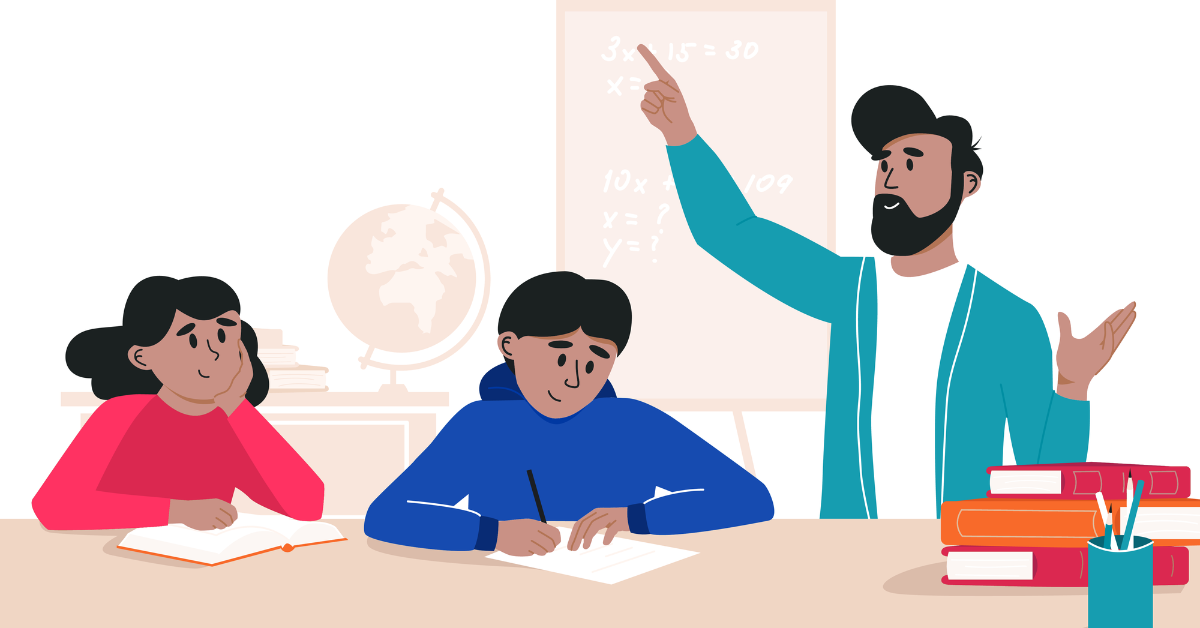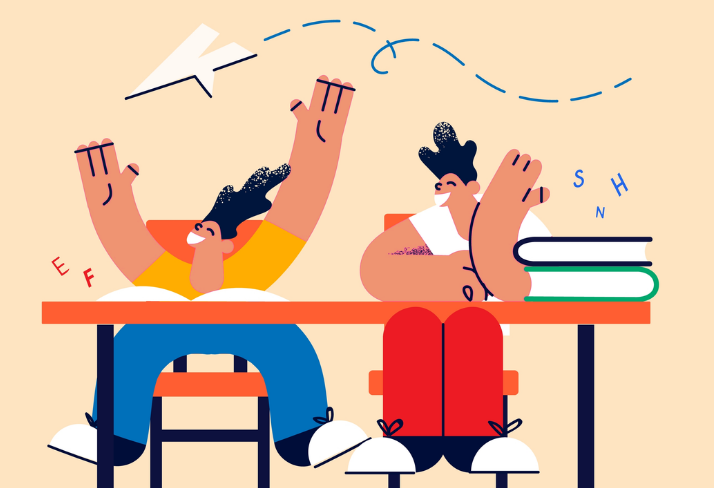|
Subtle ways to help redirect your students.
I recently met with a colleague who had just returned from visiting a science teacher’s classroom, and when I asked her about her visit, she replied, “I love being in his classroom. I mean, he’s such a natural teacher.” I nodded, because I know just what she means. In this particular teacher’s classroom, the students produce thoughtful work and always seem engaged, even cheerful, which is no small feat for high schoolers. He has a gentle, relaxed way about him and when students start to act a little silly or get off task, he swiftly ushers them to their seat or nudges them to refocus.
I kept thinking about that phrase “he’s such a natural,” and what it means to be a “natural” at teaching. Or anything, really. I thought about the teachers I’ve worked with whom I consider to be “naturals,” and how they seem to teach effortlessly, how they bring humor into the classroom and make students feel safe and welcome so they can focus on learning and engaging with the content. Professor and mentor Ruth Vinz always pushes educators to name the verbs we use in teaching. In other words, what does it mean to “teach?” In this case, what are those moves this “natural” teacher makes to keep his class running smoothly, so class time is spent on learning?
Non-confrontational strategies
Our classroom management resource can help you encourage students in your class who may need some redirecting, and proactively stop flare-ups before they start. The goal is to maximize class time with your students, and this resource may provide fresh ideas. As you look at the list, notice which strategies you are already doing and which you can try. Below are some non-confrontational strategies from this resource that I use all the time. Please note: if anyone in class is in danger of hurting themselves or others, the teacher needs to reach out for help immediately.
Acknowledgement
To the class aloud, “I want to say thank you to x, y and z for working quietly on their assignment.” Or “Everyone is working so well, keep up the good work!” This strategy notices and names students who are on task, or working towards the right direction. Naming students who are doing the “right thing” is a great teacher trick, as it allows students to hear their name in a positive way. This acknowledgement can even sound like, “I love how you are partnering together and sharing your ideas,” as this feedback names the specific ways students are working in your class. When teachers use positive narration, they are creating a positive cycle that other students will want to engage in.
Proximity
Teacher stands close to students who are talking or disruptive. The teacher continues to stand there until the students have stopped their disruptions. This is such a classic teacher move that so many of us practice without even knowing it! When a student begins to get a bit distracted, walking over to the student and standing near their seat is often enough of a gesture to refocus the distracted student, instead of elevating the situation by saying their name in a disciplinary way. Along this same trajectory, it often helps to walk farther away from students who are speaking too softly for classmates to hear. Students tend to speak loud enough for their teacher to hear, but if the teacher is moving to the far side of the classroom, they will have to raise their voice to become more understandable. This is another non-confrontational way of nudging students to project their voices instead of asking students to “speak louder.”
Waiting
Teacher is speaking to the class when talking begins. The teacher freezes mid-sentence — doesn’t speak or move — and doesn’t speak again until the room is quiet. We can all remember that teacher who could silence a class with just a look. Perhaps by widening their eyes, or a slight tilt of their head. Before you knew it, students were shushing each other and sitting up a bit straighter. While there may be a touch of teacher magic happening in these scenarios, the “Wait” strategy is an effective way to redirect your class without raising your voice! Sometimes it takes a minute for students to get quiet. This strategy is a reminder that teachers don’t have to talk louder or speak over students; on the contrary, it is more powerful to pause and wait for class to quiet down. It’s also a good reminder that sometimes silence or “wait time” in the classroom is necessary — particularly during discussions or after the teacher or a student poses a question.
There are some teachers who may appear as “naturals” in the classroom, but if you start to notice and name their teaching moves, you will find that they are practicing non-confrontational strategies with their students. These small moves are ones that all of us can employ, and with some consistency and a bit of teacher swagger, perhaps we can all be “naturals” as well.
|
|
The Center for Professional Education of Teachers (CPET) at Teachers College, Columbia University is committed to making excellent and equitable education accessible worldwide. CPET unites theory and practice to promote transformational change. We design innovative projects, cultivate sustainable partnerships, and conduct research through direct and online services to youth and educators. Grounded in adult learning theories, our six core principles structure our customized approach and expand the capacities of educators around the world.
|
ABOUT US
525 West 120th Street, Box 182 New York, NY 10027 416 Zankel Ph: (212) 678-3161 [email protected] Our Team Career Opportunities |
RESOURCES
Professional Articles Ready-to-Use Resources Teaching Today Podcast Upcoming PD Opportunities |
COACHING SERVICES
Custom Coaching Global Learning Alliance Literacy Unbound New Teacher Network Student Press Initiative |


























